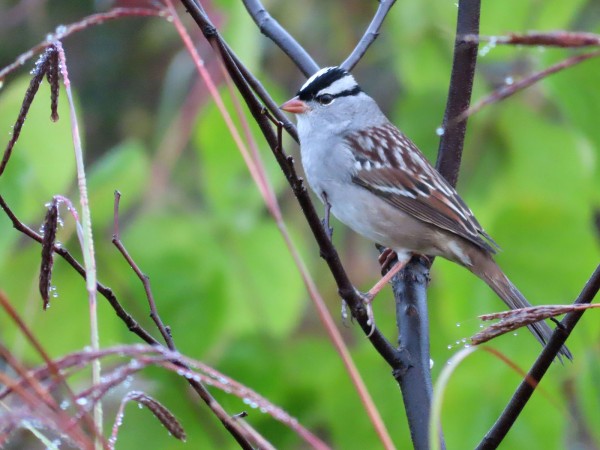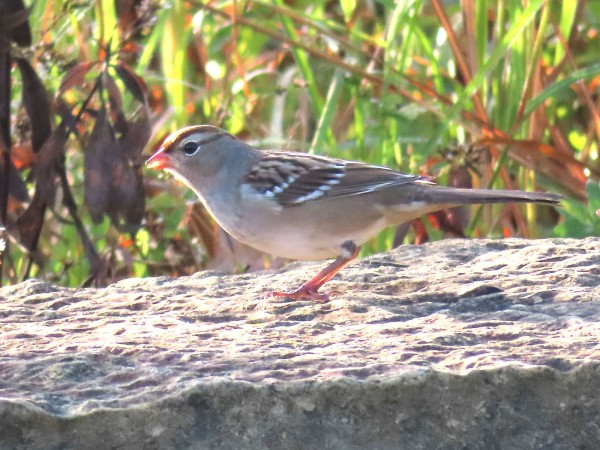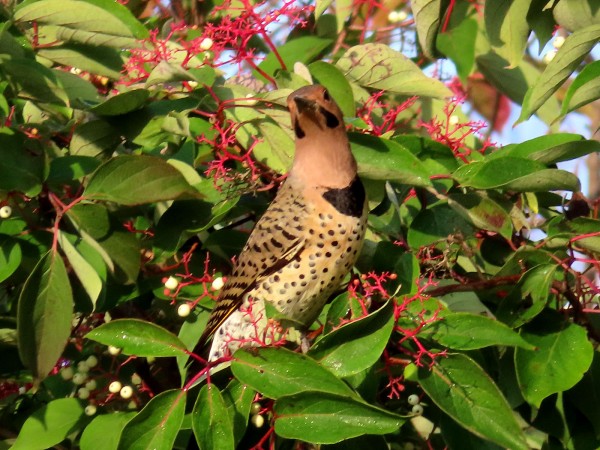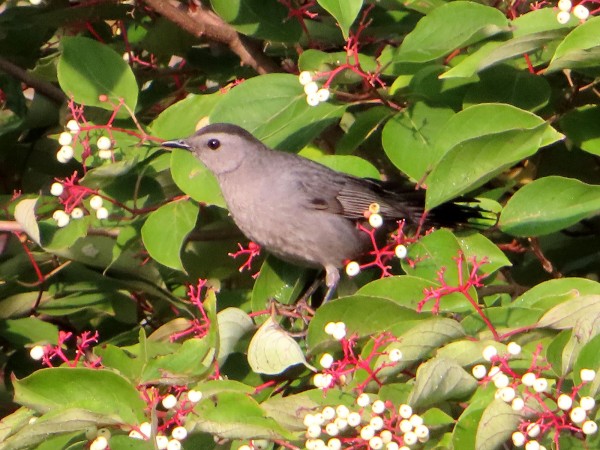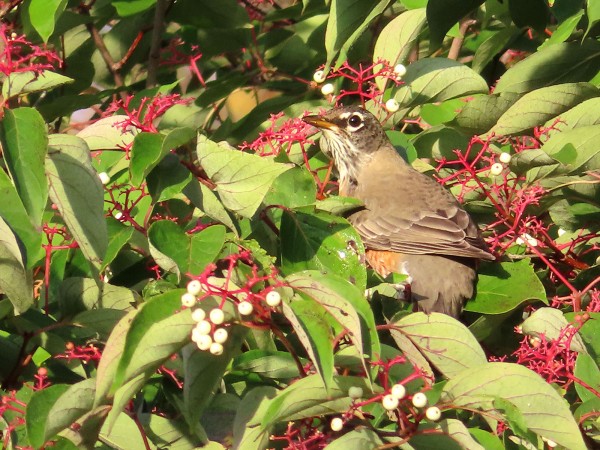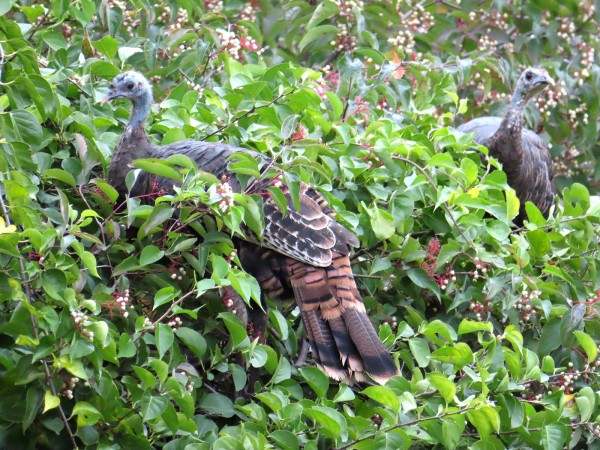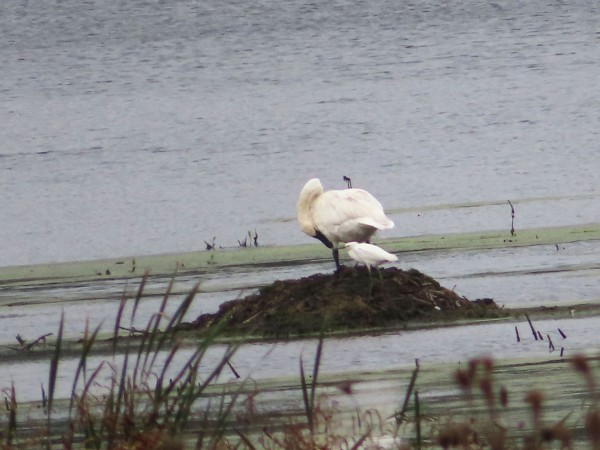Chuck's Birding Report #82
05 October - 11 October 2021
Dear fellow flock of birders,
I wish I could report that a batch of new wildflowers are blooming, but I can’t. It is almost the middle of October after all. All are about the same as last week with most wildflowers providing seeds for the birds especially the numerous American Goldfinches. I would like to mention a tree that a lot of migrant birds have been visiting this past week. That tree is the Hackberry whose leaves have turned a bright yellow and its berries a dark purple or black. Some of the migrants are eating the berries while others must be finding insects or other goodies to eat in the Hackberry.
How have the migrant birds changed this past week. I’m still seeing a few species of warblers. The Yellow-rumped Warblers have been the most numerous with the numbers increasing each day. I saw 18 today and that was my highest count for the past week and for the fall for that matter. I also saw 8 Palm Warblers today and again that was my highest count for them this past week. I’m still seeing Tennessee, Orange-crowned and Nashville Warblers but only one or two now and then.
I also am seeing kinglets and today I saw 6 Ruby-crowned Kinglets and 3 Golden-crowned Kinglet all together working the Lilacs on one side of Arboretum Drive and the Hackberries on the other side. One of the Ruby-crowneds even sang its song reminding me of spring.
Our family of 4 Sandhill Cranes, 2 adults and 2 colts, is still here. They rise up from their overnight stay in Curtis Prairie and often fly to Longnecker Gardens to feed. A couple days ago I saw a threesome of calling Sandhill Cranes fly over Curtis Prairie and our family of 4 rose up calling and appeared to chase them away.
Sparrows that we don’t see in the Arb during the summer are arriving. Again this past week I’ve been seeing and occasionally hearing their song, “Sam Peabody, Peabody, Peabody. These are the White-throated Sparrows. I most always see them along the trail in the woods on the north side of Curtis Prairie. They usually are in small flocks of 8-12 and feed on seeds on the ground of the trails or amongst the wildflowers. Mixed in with the White-throateds have been singles of Lincoln Sparrows.
Another sparrow species that has just arrived is the White-crowned Sparrow. Initially I just saw singles but today I saw 4 females and one male primarily feeding on seeds that have fallen on the asphalt path winding through the garden next to the southeast side of the Visitor Center or on the road south of the Center. Included are photos of a male and a female White-crowned Sparrow. The crowns of these sparrows always remind me of miniature bicycle helmets.
The birds are still eating the berries of the Gray Dogwoods. Some bushes are totally stripped of berries while others still have plenty. I don’t know why there is such a difference. Maybe it has something to do with ripeness but they all look white to me. Attached are photos of four species eating dogwood berries: Northern Flicker, Gray Catbird and American Robin. The fourth species is the Wild Turkey. For the first time this fall I saw two Wild Turkeys fly up into the Gray Dogwoods and eat the berries. There’s not much for them to perch on so they just thrash around while they are eating. The thrashing causes berries to fall to the ground where waiting turkeys gobble up all the fallen white treasures.
The Chipping Sparrows are still here from summer but migrants may be passing through too. All summer they eat on the ground primarily. In the fall when the Big Bluestem seeds are ripe they like to land on the stems and walk sideways to the ends of this grass to eat the seeds. All the while the stems are bouncing up and down. I hope all of you can see this activity. When 5-10 Chipping Sparrows are all doing the same thing in adjacent Big Bluestem they put on quite a show. Included is one Chipping Sparrow eating the seeds of a Big Bluestem.
I’m still hearing the two-note call of a few migrating Eastern Bluebirds flying overhead. Sometimes one or two will stop to perch for a moment so I can see them and their beautiful blue color too. Today I heard 4 and saw 2.
A couple days ago 3 Eastern Towhees stopped by and gave their nasal “chewink” call. I tried for a photo but couldn’t get a good one.
One bird I did not see this week was a Ruby-throated Hummingbird. I didn’t see any at my feeder either. I think most if not all have flown south.
My last photo is of two birds I saw together, not in the Arboretum, but in Dane County. I’ve looked for them before up there but could not find them. On Sunday I went up there again to search for them. The two birds are a small white egret with a black beak and legs and yellow feet called a Snowy Egret and a large white swan called a Trumpeter Swan. To my surprise they were both perched on a mud and stick pile in the pond together. I did not have to search for them at all. They were right there. The photo of them together shows the Trumpeter Swan reaching way down to the Snowy Egret almost touching its beak. They were still some distance away so my photo is not the best but documents the touching moment.
That’s the bird report for the past week.
Good health to all of you and good birding too,
Chuck

